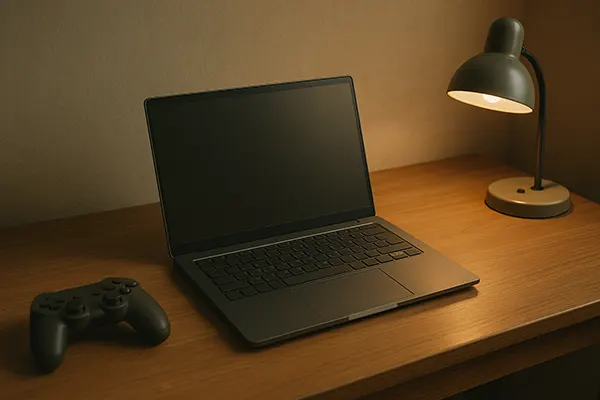How to Stream Retro Games from Emulators on Mac: Step-by-Step Guide for Twitch and YouTube

Streaming retro games from emulators on macOS has become increasingly popular among content creators on platforms like Twitch and YouTube. Whether you’re revisiting GameCube classics via Dolphin or NES favourites on RetroArch, knowing how to configure your Mac for seamless broadcasting is essential. This guide outlines everything you need to set up OBS Studio, optimise performance, and stay compliant with streaming laws — tailored specifically for February 2025.
Setting Up OBS Studio on macOS for Emulator Streaming
OBS Studio remains the top choice for streamers thanks to its free, open-source nature and robust features. Start by downloading the latest OBS version compatible with macOS Sonoma, ensuring Apple Silicon support is included for optimal performance. After installation, create a new scene and add a ‘Display Capture’ or ‘Window Capture’ source to target your emulator window directly.
For emulators like Dolphin or RetroArch, enable V-Sync and make sure the render resolution matches your stream settings — 720p or 1080p for a stable visual output. OBS allows you to adjust canvas and output resolutions separately, so you can upscale gameplay while keeping performance smooth on older Mac hardware.
To keep things responsive, go to OBS settings > Output > Streaming tab and set your encoder to ‘Apple VT H264 Hardware Encoder’ for lower CPU usage. Use a bitrate between 3000-6000 kbps depending on your upload speed. Save your profile for future streams to avoid manual configuration every time.
Using Dolphin, RetroArch and Other Emulators
Dolphin and RetroArch are among the most reliable emulators available for macOS in 2025. Dolphin excels with GameCube and Wii games, offering internal resolution scaling and built-in Netplay for multiplayer. RetroArch serves as a hub for various retro consoles through its modular ‘cores’ system and offers real-time rewind, shaders, and run-ahead to reduce latency.
Make sure to disable “Exclusive Fullscreen” in emulator settings to allow seamless OBS capture. You can also enable “Borderless Windowed” mode for a smoother transition between games and OBS. RetroArch users should access the “Settings” > “Video” tab to tweak vsync, aspect ratio, and GPU driver compatibility for macOS rendering stability.
Keep your emulator and OBS updated. Dolphin 5.0-20467 (as of February 2025) and the latest RetroArch build offer native Apple Silicon support, significantly improving performance over older Intel builds.
Low-Lag Settings for Video and Audio
Retro gaming is especially sensitive to input and audio lag, which can frustrate both players and viewers. Start by using a wired controller, preferably one recognised natively by macOS, such as the 8BitDo Pro 2 or Xbox Series Controller. Avoid wireless options to prevent input delay during live gameplay.
Within OBS, disable buffering in the video source properties and opt for ‘Fast’ or ‘Veryfast’ CPU presets under encoding settings. This lowers rendering delay without major visual compromise. Reduce frame buffering within the emulator itself — for instance, in Dolphin, turn off ‘Dual Core’ mode if experiencing sync issues with audio/video capture.
For audio, use a USB or XLR mic with an interface like Focusrite Scarlett Solo to bypass macOS’s built-in audio latency. Route audio through BlackHole or Loopback to separate mic/game audio from system sounds and give you granular control in OBS. Sync offsets can be corrected in OBS’s advanced audio settings if any delay remains.
Recommended Tools and Plugins
Use plugins like ‘OBS WebSocket’ to integrate with StreamDeck or your mobile device, allowing scene switching without keyboard interruptions. ‘OBS-VirtualCam’ is handy for using OBS output in Zoom or Discord when showcasing gameplay. For Mac users, ‘OBS-Mac-Tools’ enhances UI scaling and fixes dock preview issues in newer macOS builds.
To monitor system performance, install iStat Menus or use Activity Monitor to check for high CPU load. Closing background apps and disabling unnecessary animations in System Settings can reduce overhead and help maintain stream quality.
Regularly test your setup before going live. A short test recording or private YouTube stream ensures that your audio mix, visual clarity, and overlays are functioning correctly without surprises mid-broadcast.

Streaming to Twitch and YouTube
Once OBS is configured, link your Twitch or YouTube account through OBS’s built-in integration. For Twitch, retrieve your stream key from the Creator Dashboard under Settings > Stream, and paste it into OBS. For YouTube, you can create a ‘Go Live’ event and copy the stream key from the Live Control Room.
Set your game category properly — Twitch offers tags like “Retro” and individual game titles such as “Super Mario Sunshine.” YouTube allows similar metadata adjustments before going live. Always write a clear title and description that reflects what’s being streamed and add timestamps or chapters if uploading the VOD later.
Engagement is crucial: use alerts and overlays (via tools like Streamlabs or StreamElements) to highlight donations, followers, or comments. Be sure to moderate your chat, either manually or with bots like Nightbot, to keep your stream interactive but safe from spam or unwanted behaviour.
Legal Considerations for Emulator Streaming
Legally, you are permitted to stream games from emulators as long as you own the original copies of the games and have dumped the ROMs yourself. Downloading copyrighted ROMs from unauthorised sources is illegal and may result in DMCA takedowns on Twitch or YouTube.
Use BIOS files legally extracted from your own consoles and avoid using pre-configured emulator builds with copyrighted assets. Platforms like YouTube may automatically flag certain music or visual content, so consider muting in-game music or using royalty-free tracks where appropriate.
Include a short disclaimer in your video description stating you own all content legally. This won’t make you immune to takedowns, but it demonstrates intent to comply. Consult Twitch’s and YouTube’s content policies regularly, as they may change enforcement strategies depending on new copyright laws.
